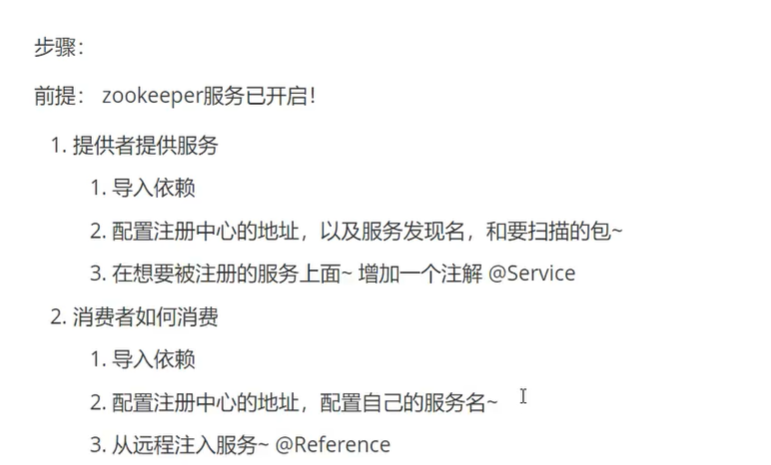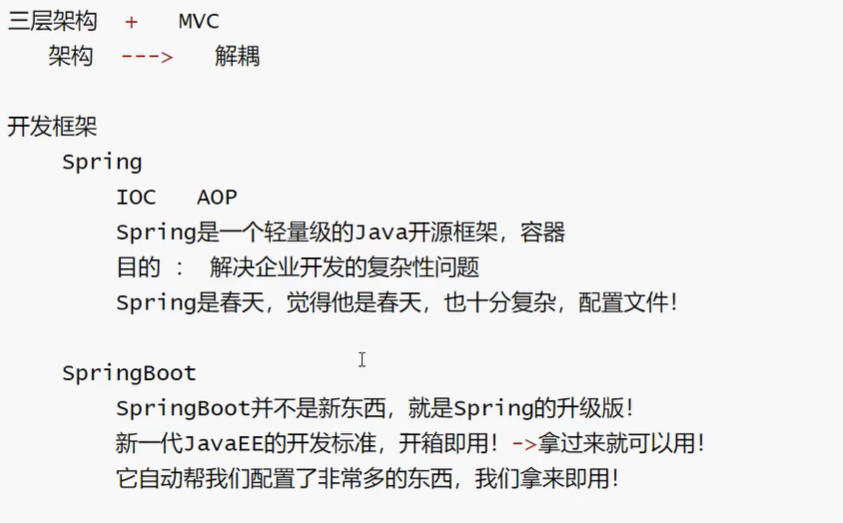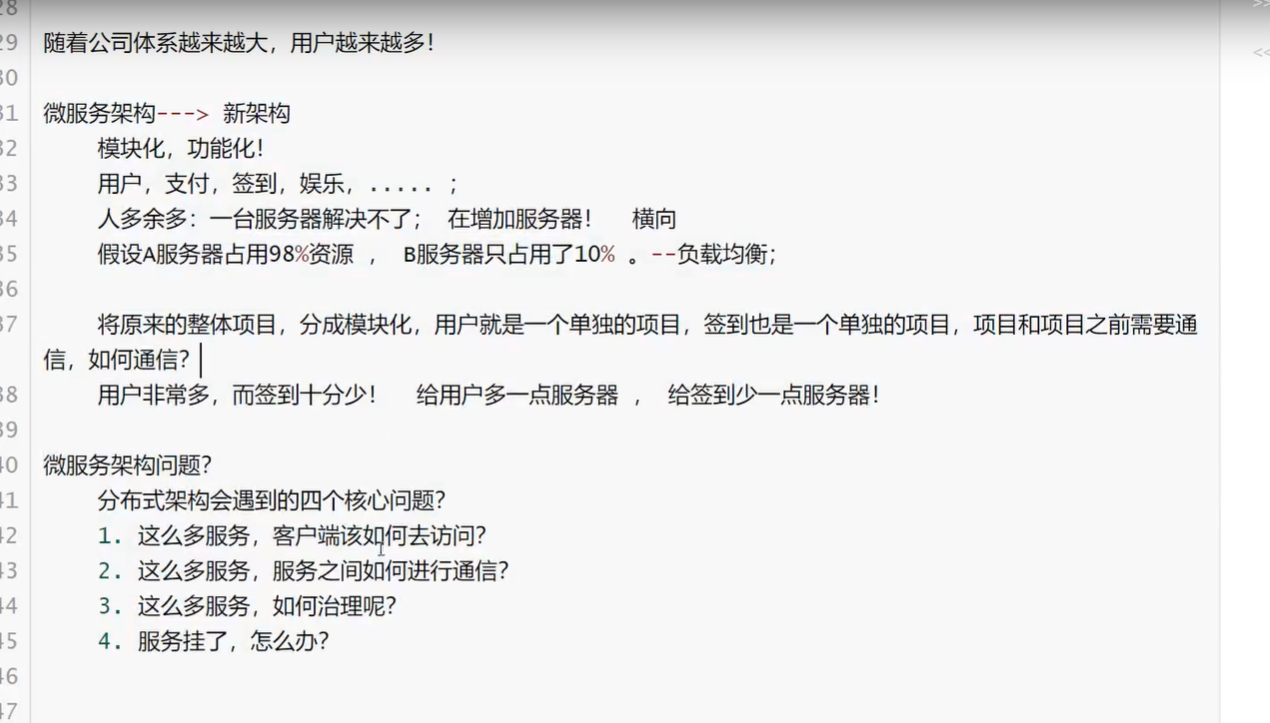1. Distributed theory
1.1. What is a distributed system?
- In the book "principles and models of distributed systems", there is the following definition: "a distributed system is a collection of several independent computers, which are like a single related system to users";
- Distributed system is a system composed of a group of computer nodes that communicate through the network and coordinate to complete common tasks. The emergence of distributed system is to use cheap and ordinary machines to complete the computing and storage tasks that a single computer cannot complete. Its purpose is to use more machines to process more data.
- distributed system is a software system based on network.
- First of all, it should be clear that we need to consider distributed systems only when the processing capacity of a single node can not meet the increasing computing and storage tasks, and the improvement of hardware (adding memory, adding disk and using better CPU) is too high to pay off, and the application can not be further optimized. Because the problems to be solved by the distributed system itself are the same as those of the single machine system. Due to the multi node and network communication topology of the distributed system, many problems that the single machine system does not have will be introduced. In order to solve these problems, more mechanisms and agreements will be introduced to bring more problems...
1.2 Dubbo documents
- With the development of the Internet and the continuous expansion of the scale of website applications, the conventional vertical application architecture can not cope with it. The distributed service architecture and mobile computing architecture are imperative, and a governance system is urgently needed to ensure the orderly evolution of the architecture.
- There is such a picture on Dubbo's official website

1.3. Single application architecture
When the website traffic is very small, only one application is needed to deploy all functions together to reduce deployment nodes and costs. At this time, the data access framework (ORM) used to simplify the workload of addition, deletion, modification and query is the key.
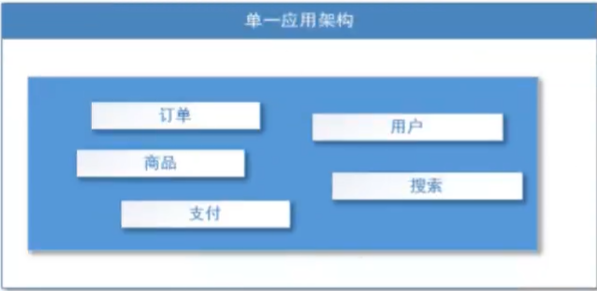
It is applicable to small websites and small management systems. All functions are deployed into one function, which is simple and easy to use.
Disadvantages:
- Performance scaling is difficult
- Collaborative development problem
- Not conducive to upgrade and maintenance
1.4 vertical application architecture
When the number of visits increases gradually, the acceleration brought by a single application increases and the machine decreases. The application is divided into several unrelated applications to improve efficiency. At this point, the Web framework (MVC) for accelerating front-end page development is the key.

The independent deployment of each module is realized through business segmentation, which reduces the difficulty of maintenance and deployment. The team performs its own duties, which is easier to manage, and the performance expansion is more convenient and targeted.
Disadvantages: common modules cannot be reused, which is a waste of development
1.5 distributed service architecture
When there are more and more vertical applications, the interaction between applications is inevitable. Extract the core business as an independent service, and gradually form a stable service center, so that the front-end applications can respond to the changing market demand more quickly. At this time, the distributed service framework (RPC) for improving business reuse and integration is the key.
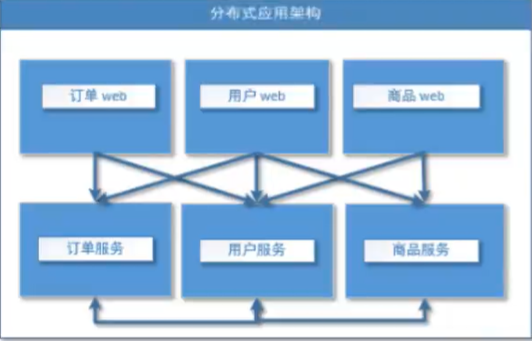
1.6. Flow computing architecture
When there are more and more services, problems such as capacity evaluation and waste of small service resources gradually appear. At this time, it is necessary to add a dispatching center to manage the cluster capacity in real time based on the access pressure and improve the cluster utilization. At this time, the resource scheduling and Governance Center (SOA) [Service Oriented Architecture] used to improve machine utilization is the key.

2,RPC
2.1 introduction to RPC
- RPC [Remote Procedure Call] refers to Remote Procedure Call. It is a way of inter process communication. It is a technical idea, not a specification. It allows a program to call a procedure or function in another address space (usually on another machine sharing a network) without the programmer explicitly encoding the details of the remote call. That is, whether programmers call local or remote functions, the calling code written by programmers is basically the same.
- In other words, two servers A and B, one application deployed on server A, want to call the functions / methods provided by the application on server B. because they are not in the same memory space, they cannot be called directly. They need to express the calling semantics and convey the calling data through the network. Why use RPC? It is A requirement that cannot be completed in A process or even in A computer through local call, such as communication between different systems, or even communication between different organizations. Because the computing power needs to be expanded horizontally, applications need to be deployed on A cluster composed of multiple machines. RPC is to call remote functions like calling local functions;
Recommended reading: https://www.jianshu.com/p/2accc2840a1b
2.2 basic principles of RPC
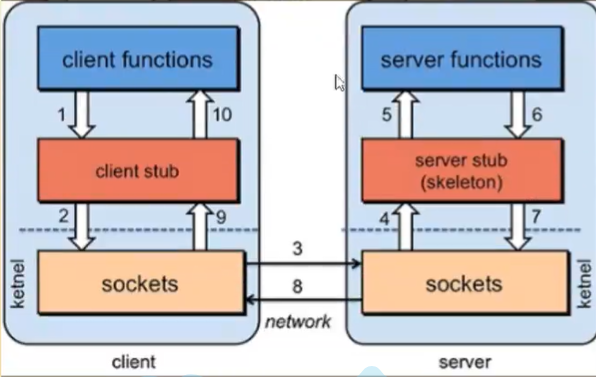
Step resolution:
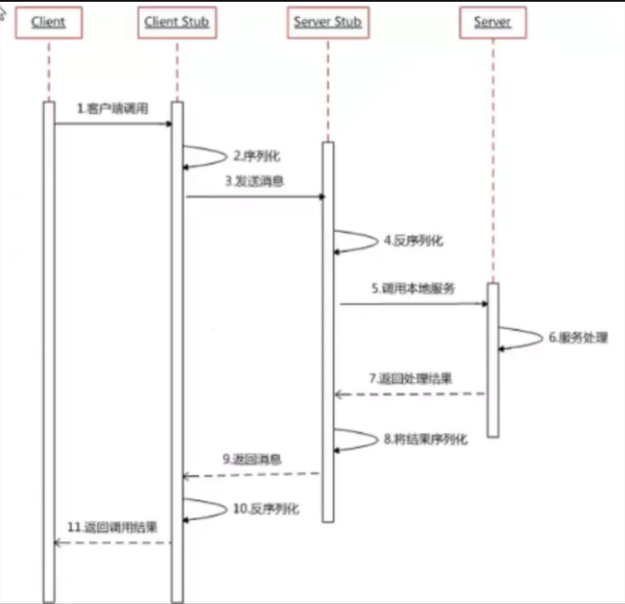
RPC has two core modules: communication and serialization.
3,Dubbo
3.1 introduction to Dubbo
Apache Dubbo | ˈ d ʌ b əʊ| It is a high-performance and lightweight open source Java RPC framework. It provides three core capabilities: interface oriented remote method invocation, intelligent fault tolerance and load balancing, and automatic service registration and discovery.
- Understand the characteristics of Dubbo
- View official documents
dubbo basic concept
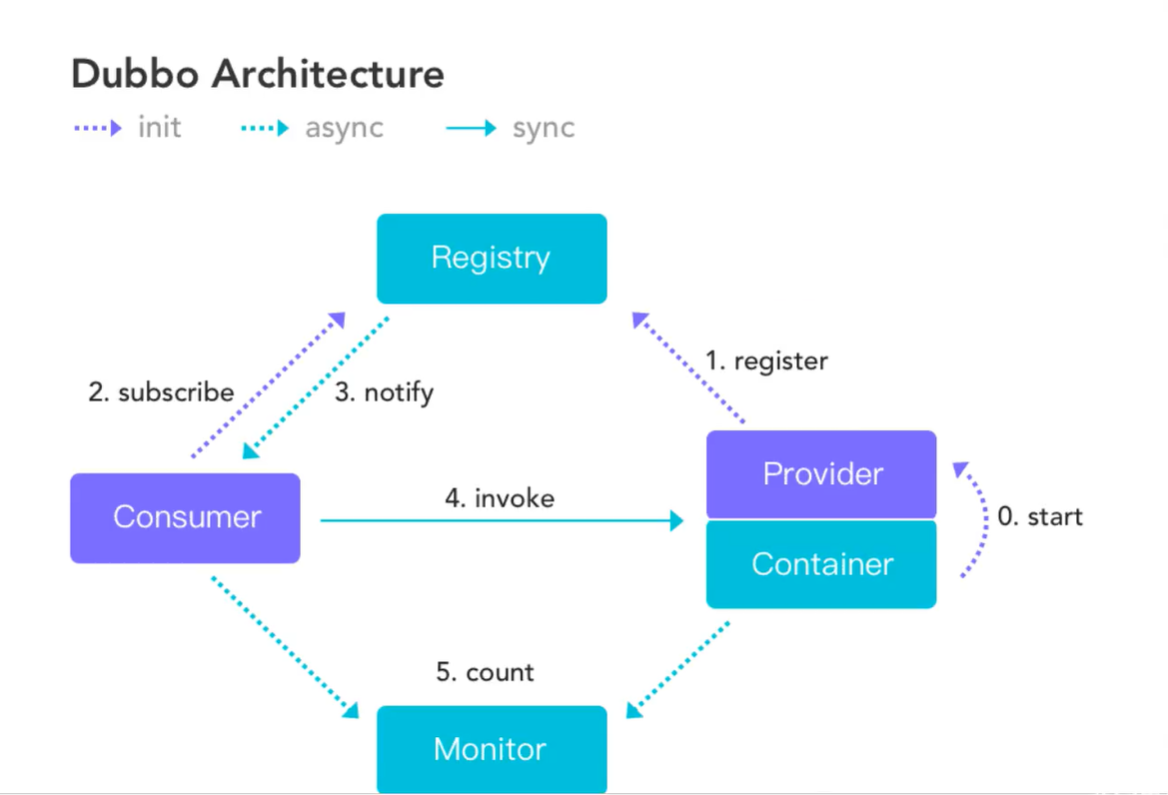
- Service provider: the service provider that exposes the service. When the service provider starts, it registers the services it provides with the registry.
- Service Consumer: the service Consumer that invokes the remote service. When starting, the service Consumer subscribes to the service required by the registry. The service Consumer selects one provider from the provider address list based on the soft load balancing algorithm to call. If the call fails, select another one to call.
- Registry: the registry returns the service provider address list to the consumer. If there is any change, the registry will push the change data to the consumer based on the long connection
- Monitor ing center: service consumers and providers accumulate call times and call times in memory, and regularly send statistical data to the monitoring center every minute
Call relation description
- l the service container is responsible for starting, loading and running the service provider.
- l when a service provider starts, it registers its services with the registry.
- l service consumers subscribe to their required services from the registry when starting.
- l the registration center returns the service provider address list to the consumer. If there is any change, the registration center will push the change data to the consumer based on the long connection.
- l the service consumer selects one provider from the provider address list based on the soft load balancing algorithm to call. If the call fails, select another provider to call.
- l service consumers and providers accumulate call times and call times in memory, and regularly send statistical data to the monitoring center every minute.
3.2 construction of Dubbo environment
- Click into dubbo official documents, We recommend using the Zookeeper registry
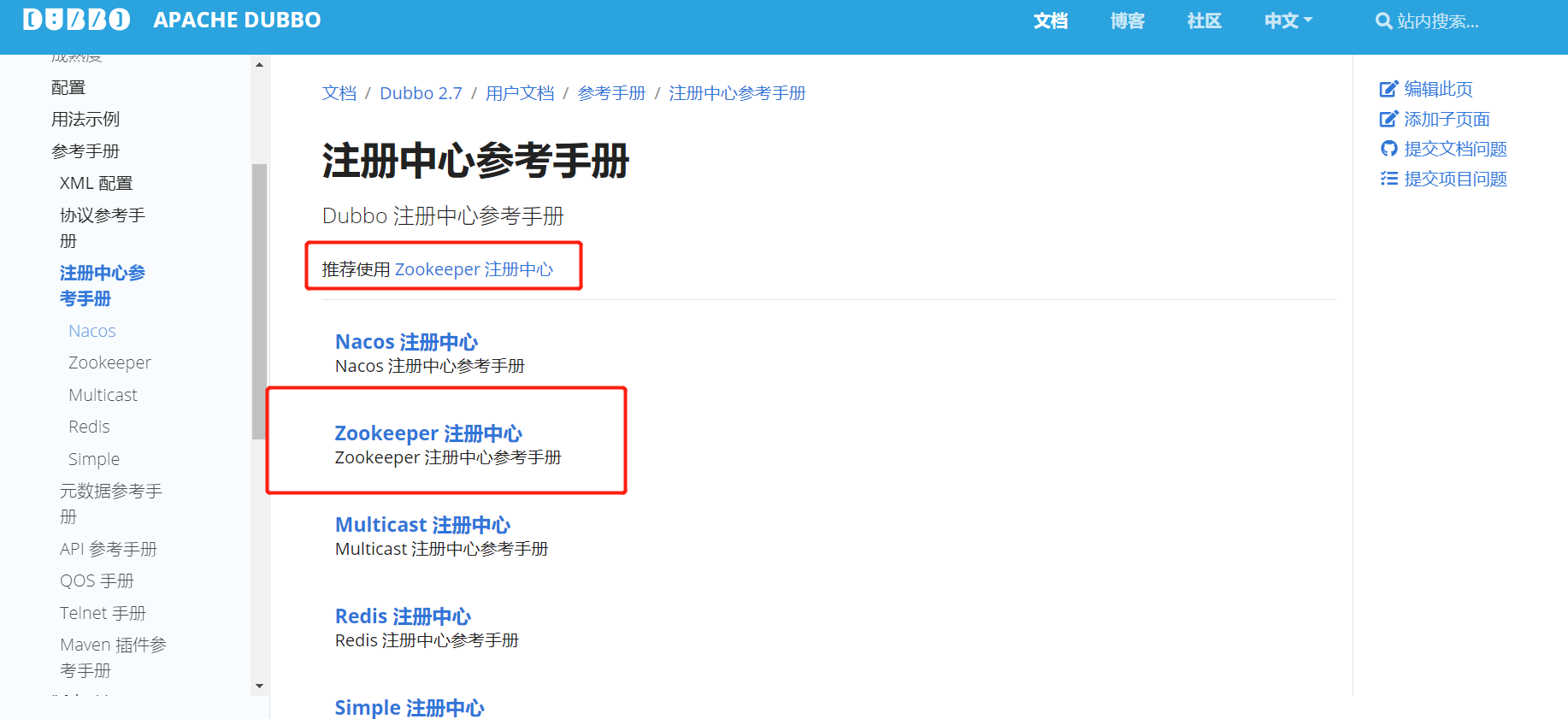
- What is zookeeper? Can view Official documents
3.3. Installing zookeeper under Window
- Download zookeeper: address , we download 3.7.0, the latest version! Unzip zookeeper; 3.5.5 files with bin should be downloaded in the future
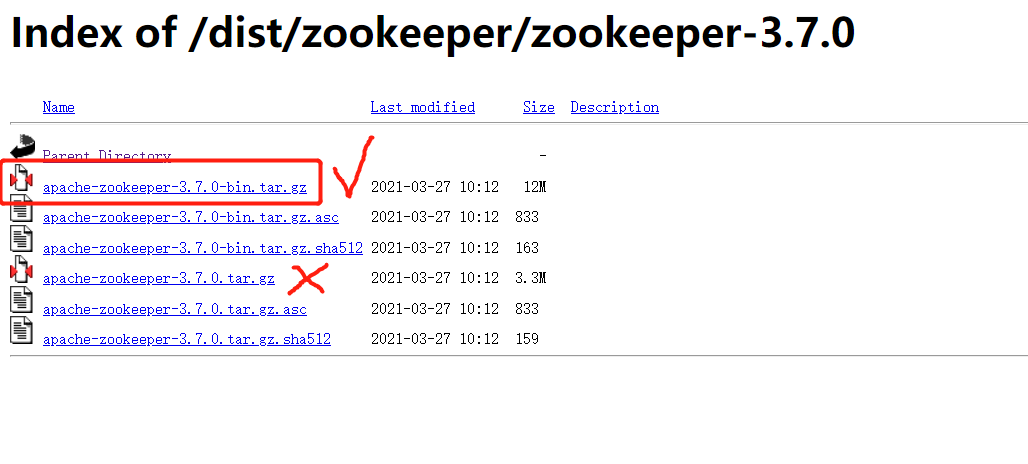
- Run / bin / zkserver.com as an administrator CMD, an error will be reported during the initial operation, and there is no zoo CFG configuration file;
- Possible problems: flash back!
- Solution: edit zkserver Add pause at the end of CMD file. Run / bin / zkserver.com as administrator again CMD will not exit if there is an error, and an error message will be prompted to find the reason.
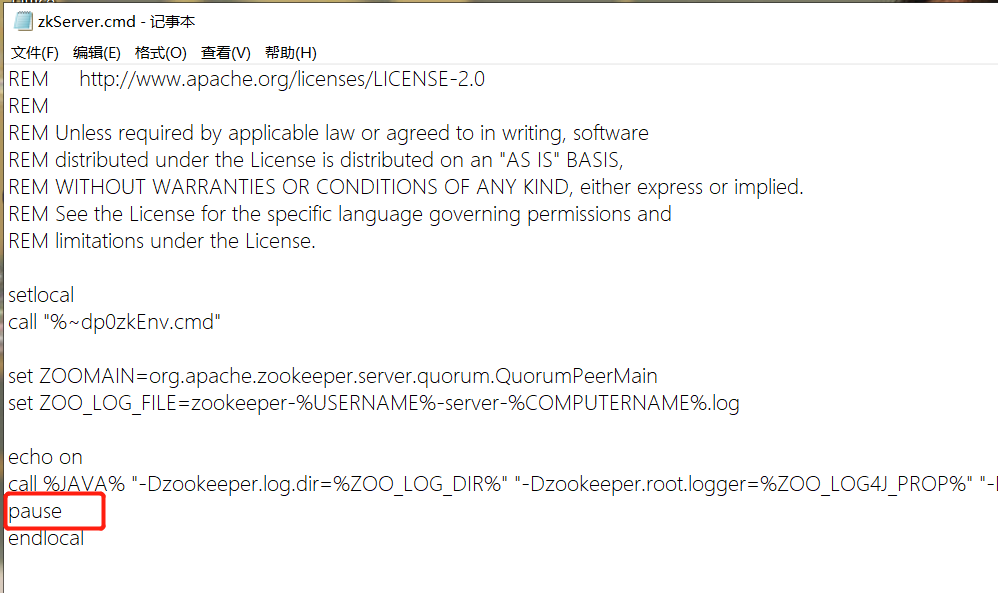

- Modify zoo CFG configuration file: set the zoo under the conf folder_ sample. CFG copy and rename it zoo CFG is enough. Note several important points: start zookeeper again after the modification is completed
dataDir=./ Directory of temporary data store (writable relative path) clientPort=2181 zookeeper Port number of

6. Use zkcli CMD test: ls /: list all nodes saved under the root of zookeeper
[zk: 127.0.0.1:2181(CONNECTED) 4] ls / [zookeeper]
Create – e /dxj1016 123: create a kuangshen node with a value of 123

get /kuangshen: get the value of the / kuangshen node

Let's look at the nodes again

3.4. Install Dubbo admin under window
- dubbo itself is not a service software. It is actually a jar package, which can help your java program connect to zookeeper and use zookeeper to consume and provide services.
- However, in order to enable users to better manage and monitor many dubbo services, the official provides a visual monitoring program dubbo admin, but this monitoring will not affect the use even if it is not installed.
- Let's install it here:
1. Download Dubbo admin
Address: https://github.com/apache/dubbo-admin/tree/master
2. Unzip into the directory
Modify Dubbo admin \ SRC \ main \ resources \ application Properties specifies the zookeeper address
server.port=7001 spring.velocity.cache=false spring.velocity.charset=UTF-8 spring.velocity.layout-url=/templates/default.vm spring.messages.fallback-to-system-locale=false spring.messages.basename=i18n/message spring.root.password=root spring.guest.password=guest dubbo.registry.address=zookeeper://127.0.0.1:2181
3. Package Dubbo admin in the project directory
mvn clean package -Dmaven.test.skip=true
The first packaging process is a little slow and needs to wait patiently! Until success!
If 'mvn' appears, it is not an internal or external command, nor is it a runnable program or batch file. Indicates that the maven environment configuration is not configured, To configure maven environment variables
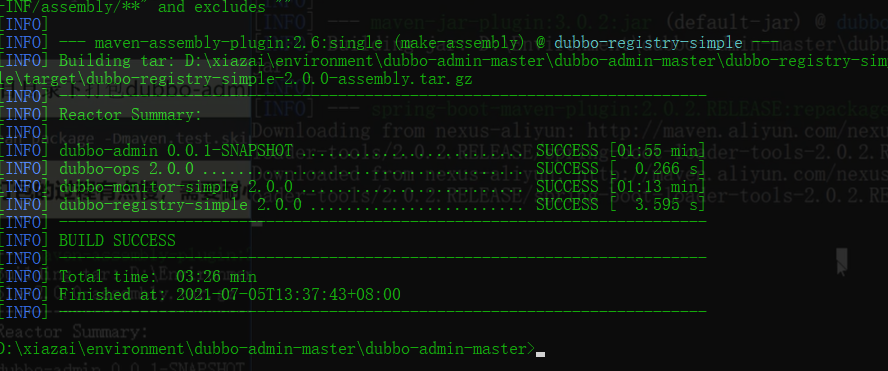
4. Execute dubbo-admin-0.0.1-snapshot. Under Dubbo admin \ target jar
java -jar dubbo-admin-0.0.1-SNAPSHOT.jar
[Note: the zookeeper service must be turned on!]
After execution, let's go and visit http://localhost:7001/ At this time, we need to enter the login account and password. We are the default root root;
After successful login, view the interface

Installation complete!
zookeeper: Registry
Dubbo admin: it is a monitoring and management background to check which services we have registered and which services are consumed
4,SpringBoot+Dubbo+Zookeeper
4.1 framework construction
- Start zookeeper!
- IDEA creates an empty project;
- Create a module to implement the service provider: provider server, and select web dependency
- After the project is created, we write a service, such as ticket selling service;
- Write interface
package cn.dxj1016.provider.service;
public interface TicketService {
public String getTicket();
}
- Writing implementation classes
package com.kuang.provider.service;
public class TicketServiceImpl implements TicketService {
@Override
public String getTicket() {
return "<Madness theory Java>";
}
}
- Create a module to realize the service consumer: consumer server, and select web dependency
- After the project is created, we write a service, such as the user's service; Write service
package cn.dxj1016.consumer.service;
public class UserService {
//We need to get the service from the registration center
}
Demand: now our users want to use the ticket buying service. How do we do this?
4.2 service providers
1. To register the service provider in the registration center, we need to integrate Dubbo and zookeeper, so we need to import the package into the service provider module, and Baidu search maven
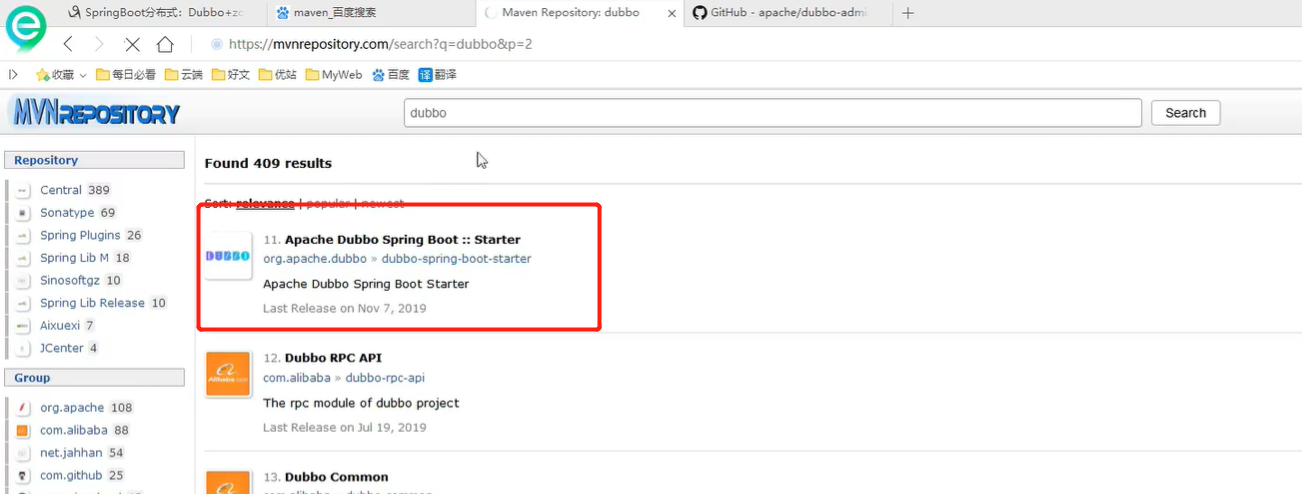
<!-- Dubbo Spring Boot Starter --> <dependency> <groupId>org.apache.dubbo</groupId> <artifactId>dubbo-spring-boot-starter</artifactId> <version>2.7.3</version> </dependency>
zookeeper's package is downloaded from maven warehouse, zkclient;
<!-- https://mvnrepository.com/artifact/com.github.sgroschupf/zkclient --> <dependency> <groupId>com.github.sgroschupf</groupId> <artifactId>zkclient</artifactId> <version>0.1</version> </dependency>
[new version of pit] zookeeper and its dependency package. To solve log conflicts, you also need to eliminate log dependencies;
<!-- introduce zookeeper -->
<dependency>
<groupId>org.apache.curator</groupId>
<artifactId>curator-framework</artifactId>
<version>2.12.0</version>
</dependency>
<dependency>
<groupId>org.apache.curator</groupId>
<artifactId>curator-recipes</artifactId>
<version>2.12.0</version>
</dependency>
<dependency>
<groupId>org.apache.zookeeper</groupId>
<artifactId>zookeeper</artifactId>
<version>3.4.14</version>
<!--Exclude this slf4j-log4j12-->
<exclusions>
<exclusion>
<groupId>org.slf4j</groupId>
<artifactId>slf4j-log4j12</artifactId>
</exclusion>
</exclusions>
</dependency>
2. Configure dubbo related properties in the springboot configuration file!
#Current app name dubbo.application.name=provider-server #Address of Registration Center dubbo.registry.address=zookeeper://127.0.0.1:2181 #Scan the services under the specified package dubbo.scan.base-packages=com.kuang.provider.service
3. Configure the service annotation in the service implementation class and publish the service! Pay attention to the problem of guide package
import org.apache.dubbo.config.annotation.Service;
import org.springframework.stereotype.Component;
@Service //Publish services
@Component //Place in container
public class TicketServiceImpl implements TicketService {
@Override
public String getTicket() {
return "<Madness theory Java>";
}
}
Logical understanding: when the application is started, dubbo will scan the service with @ component annotation under the specified package, publish it in the specified registry, start zookeeper and dubbo admin, visit http:localhost:7001 and view the provider

4.3 service consumers
1. Import dependency, the same as the previous dependency;
<!--dubbo-->
<!-- Dubbo Spring Boot Starter -->
<dependency>
<groupId>org.apache.dubbo</groupId>
<artifactId>dubbo-spring-boot-starter</artifactId>
<version>2.7.3</version>
</dependency>
<!--zookeeper-->
<!-- https://mvnrepository.com/artifact/com.github.sgroschupf/zkclient -->
<dependency>
<groupId>com.github.sgroschupf</groupId>
<artifactId>zkclient</artifactId>
<version>0.1</version>
</dependency>
<!-- introduce zookeeper -->
<dependency>
<groupId>org.apache.curator</groupId>
<artifactId>curator-framework</artifactId>
<version>2.12.0</version>
</dependency>
<dependency>
<groupId>org.apache.curator</groupId>
<artifactId>curator-recipes</artifactId>
<version>2.12.0</version>
</dependency>
<dependency>
<groupId>org.apache.zookeeper</groupId>
<artifactId>zookeeper</artifactId>
<version>3.4.14</version>
<!--Exclude this slf4j-log4j12-->
<exclusions>
<exclusion>
<groupId>org.slf4j</groupId>
<artifactId>slf4j-log4j12</artifactId>
</exclusion>
</exclusions>
</dependency>
2. Configuration parameters
#Current app name dubbo.application.name=consumer-server #Address of Registration Center dubbo.registry.address=zookeeper://127.0.0.1:2181
3. Originally, the normal step is to package the service provider's interface and import it with pom file. Here, we use a simple method to directly take the service interface. The path must be correct, that is, the same as that of the service provider;
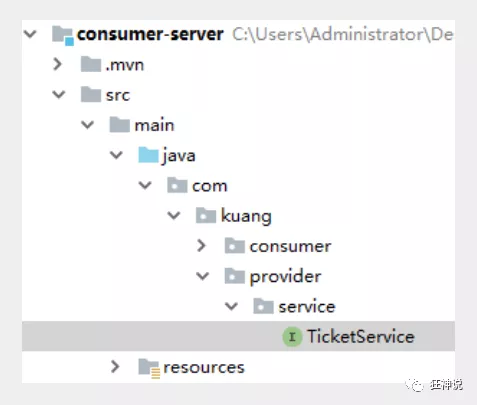
4. Improve consumer services
package com.kuang.consumer.service;
import com.kuang.provider.service.TicketService;
import org.apache.dubbo.config.annotation.Reference;
import org.springframework.stereotype.Service;
@Service //Inject into container
public class UserService {
@Reference //If the specified service is referenced remotely, it will match according to the full class name to see who has registered the full class name in the registry
TicketService ticketService;
public void bugTicket(){
String ticket = ticketService.getTicket();
System.out.println("Buy it at the registry"+ticket);
}
}
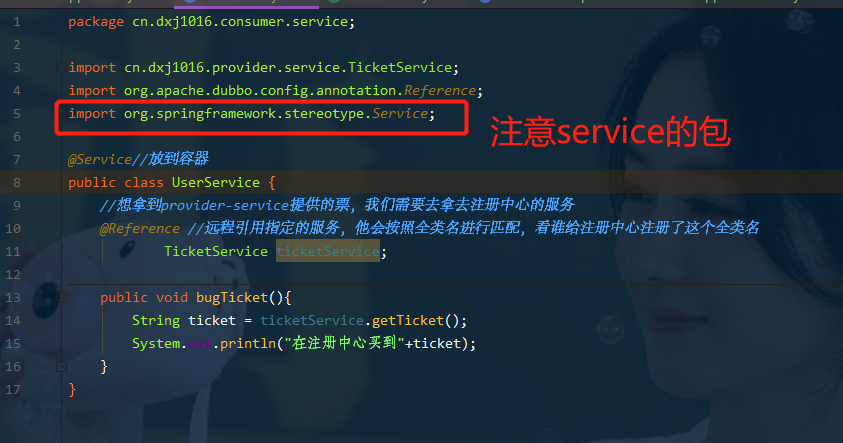
5. Test class preparation;
@RunWith(SpringRunner.class)
@SpringBootTest
public class ConsumerServerApplicationTests {
@Autowired
UserService userService;
@Test
public void contextLoads() {
userService.bugTicket();
}
}
4.4 start up test
-
Start zookeeper
-
Open Dubbo admin to realize monitoring [can be omitted]
-
Open server
-
Consumer consumption test, results:
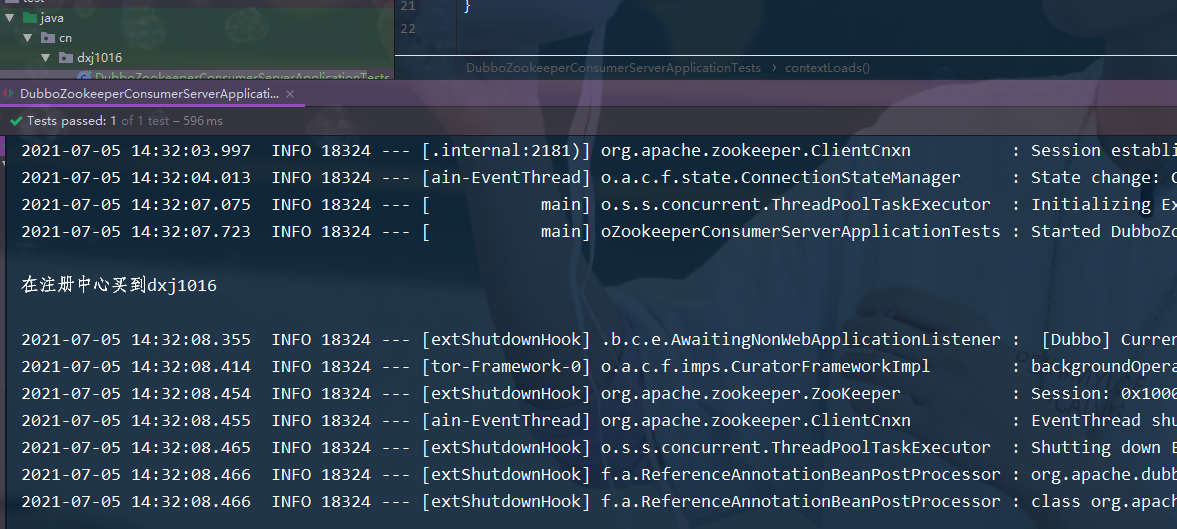
Monitoring center:

ok, this is the application of SpingBoot + dubbo + zookeeper to realize distributed development. In fact, it is an idea of service splitting;
Summary:
